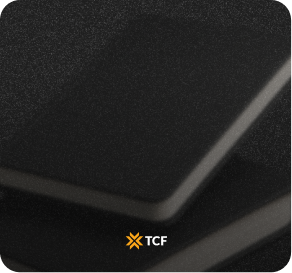Every founder believes their product is ready until the market says otherwise. Before a campaign can raise thousands (or millions) on Kickstarter or Indiegogo, it has to survive a crucial checklist.
I sat down with Babken, Senior Business Development Specialist at TCF, to discuss how his team spots the gaps that separate a promising idea from a product truly ready for launch. With over four years in the industry and more than 200 campaigns under his belt, Babken has helped raise over $25 million for innovative creators. In our conversation, he broke down what “ready” actually means, where most founders stumble, and how TCF’s pre-launch process turns uncertainty into clarity.
Jasmine: How do you know when a product is ready for crowdfunding?
Babken: A good idea doesn’t automatically mean a good campaign. You can have an amazing concept, but without the right preparation and processes, it won’t survive the crowdfunding market.
Pre-launch is where this usually shows. That’s where you test whether your positioning, pricing, and product presentation make sense. It’s where we find out if the market actually cares.
When someone reaches out to TCF, the first step is often pre-launch. It runs through Prelaunch.com, which helps validate whether the product has real potential.
We analyze demand, refine messaging, and see how people respond. And honestly, in about 70–80% of cases, the product still needs work. The idea might be strong, but the foundation isn’t there yet.
Jasmine: What foundations should every crowdfunding product have before launch?
Babken: The first thing we look for is a prototype. It doesn’t have to be the final version, but there needs to be something real to show.
Then visuals: photos or short videos that make the product feel tangible, like something you can actually hold.
And finally, some early signs of audience-building. Maybe they’ve collected leads, created a small community on social platforms, or gathered feedback through organic posts or small ad tests. Those are all indicators that a founder understands what it takes to build momentum before launch.
If they’ve already tested ideas, messaging, or pricing, even in small experiments, that data gives us a head start. We can skip what failed and focus on what performs.
Jasmine: Do founders usually understand their production and shipping costs before launching?
Babken: Not all of them. That’s one of the gaps we see especially with first-time creators.
Many first-time creators don’t realize how important it is to know production and shipping costs before they launch. If someone doesn’t calculate those numbers early, they might price their product too low and end up with zero margin.
A founder might think, “I’ll sell this for around $300, that should work.” But once they start running the numbers, they realize manufacturing alone could cost $200, for example. That’s before you even factor in platform fees, agency costs, and the marketing budget. By the time all of that adds up, there’s barely any margin left, and suddenly even a successful million-dollar crowdfunding campaign isn’t profitable.
Jasmine: Beyond cost analysis, what other gaps do you usually see in a product’s readiness?
Babken: Skipping real market validation is a big one. A lot of founders assume their product’s needed just because they like it. They’re too in love with their own ideas, and most of the time, love is blind.
Another one is not defining a clear unique selling point. In crowdfunding, your USP is everything. Backers need to instantly see why your product’s worth paying for and waiting months to get, sometimes even without knowing if they’ll actually get it at all.
Sometimes founders just pick something like design, features, or materials, and decide that’s their unique selling point. But they’ve never tested if that’s what people actually care about. They assume it is, but until you test it, you’re guessing, and guessing isn’t validation.
Crowdfunding audiences also think differently than regular shoppers. They care more about innovation and the story behind the product than about polished design or features alone. So when we say a product isn’t ready, it’s often because it hasn’t been tested for that kind of audience yet.
Jasmine: How do emotions get in the way of validation?
Babken: You notice it right away. Our process is data-driven, but emotion and data don’t always align.
Founders who are too attached often ignore what the data says. They’ll show their product to friends or family, get nice comments, and take that as proof. But you can’t base a whole campaign on polite comments. Real validation is when people subscribe, reserve, or put money down to support your product.
If your friends or parents like it, that’s great, but they’re most likely not your audience. You need opinions from your real target market. And in crowdfunding, it’s even more specific. You don’t just want coffee lovers, you want crowdfunding-friendly coffee lovers, people who enjoy coffee and also enjoy discovering early innovations.
Jasmine: How do you communicate that to founders without discouraging them?
Babken: It's about open communication and proper explanation of risks. We don't say, “Your product won’t work.”: because we don't know if it will work or not. We explain to them the risks of launching without having a good understanding of the market.
We show them what needs testing: pricing, messaging, audience fit. Some take that feedback well and adjust. Others resist because they think validation’s already done. Usually, the ones who stay open to testing end up succeeding later.
Jasmine: What does the pre-launch validation process actually look like at TCF?
Babken: TCF steps in to guide them through our pre-launch validation model. We’ve refined it over years of testing. When a team realizes they’re not fully confident in their pricing, target market, or positioning, we help them figure those things out through testing.
During pre-launch, we create a landing page for their product, drive highly targeted traffic through ads, and show people everything they need to know about it.
It’s a two-step process: first, visitors see the product and subscribe if they’re interested. Then they see the price and can choose to reserve it. That reservation step tells us everything about true purchase intent.
The whole thing takes around six to eight weeks, from visuals and landing page creation to testing different pricing, positioning, and ad strategies.
Jasmine: After everything we’ve discussed, what’s the one message you want founders to remember before they launch?
Babken: Preparation always beats passion. Treat pre-launch like your safety net—it’s where you make mistakes cheaply and learn fast.
You can love your idea, but until you’ve tested it, validated it, and seen real demand, it’s not ready. Data should be what gives you confidence.
Conclusion
Our conversation with Babken pulled back the curtain on what “ready” really means in crowdfunding. It’s less about having the perfect product and more about building the discipline to test, measure, and adjust before the world sees it.
His insights showed how much of success comes from the work that happens quietly, in spreadsheets, ad dashboards, and landing page drafts. Preparation isn’t glamorous, but as Babken put it, it’s what turns ideas into outcomes and passion into proof.
[[cta2]]







.png)


.png)




